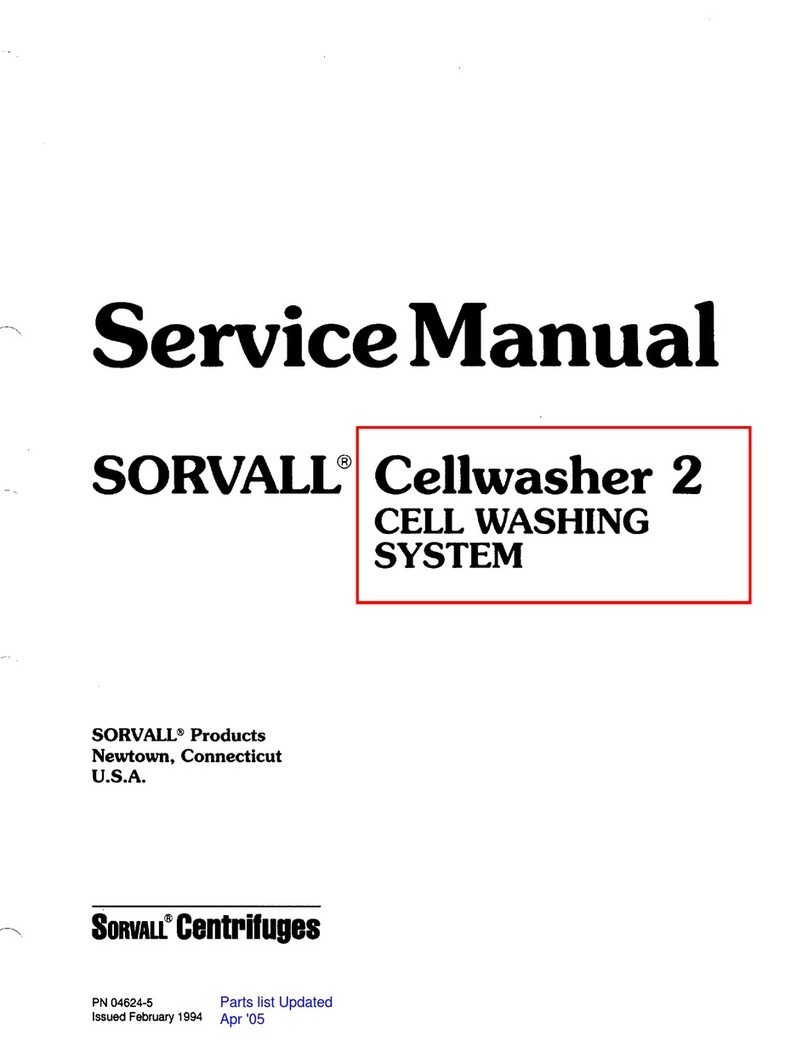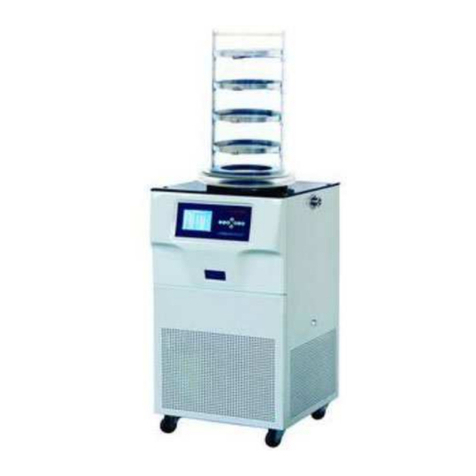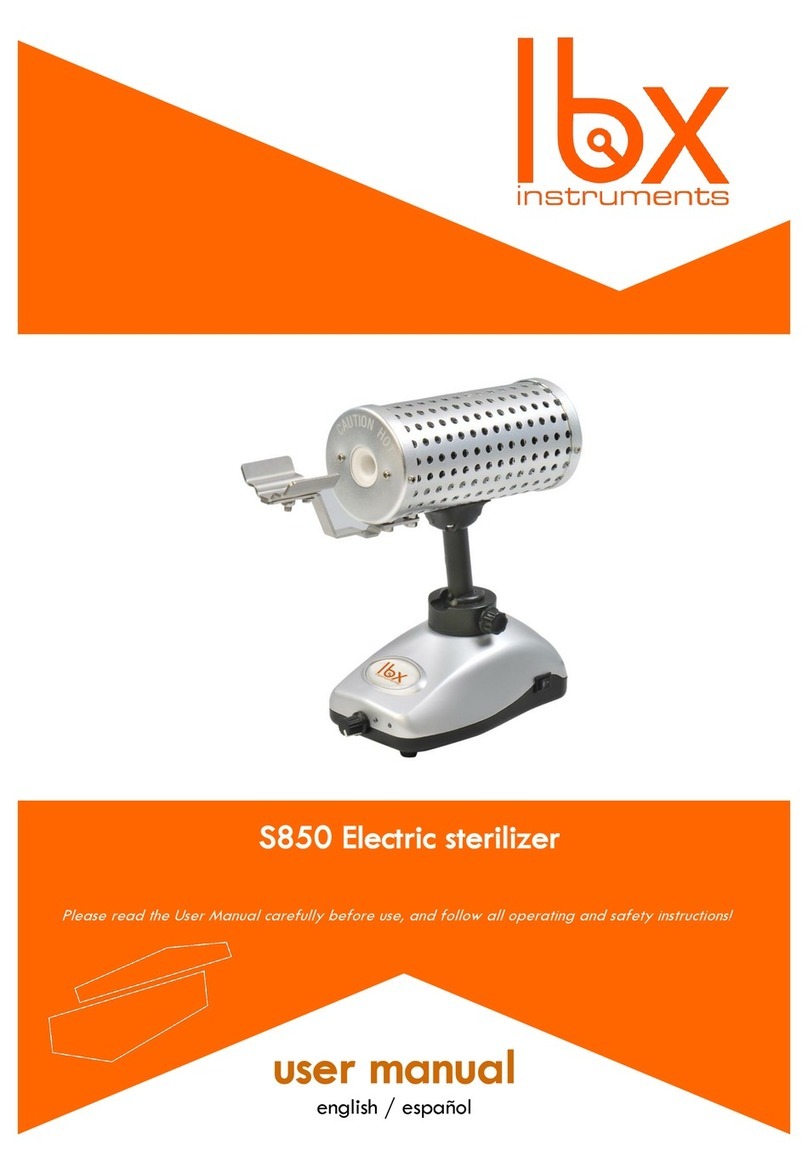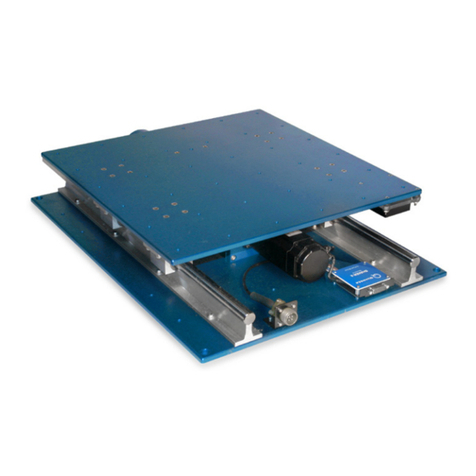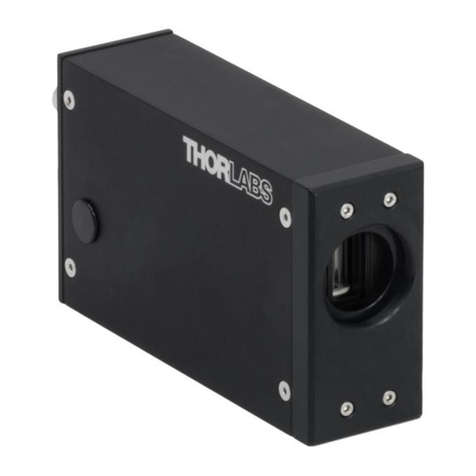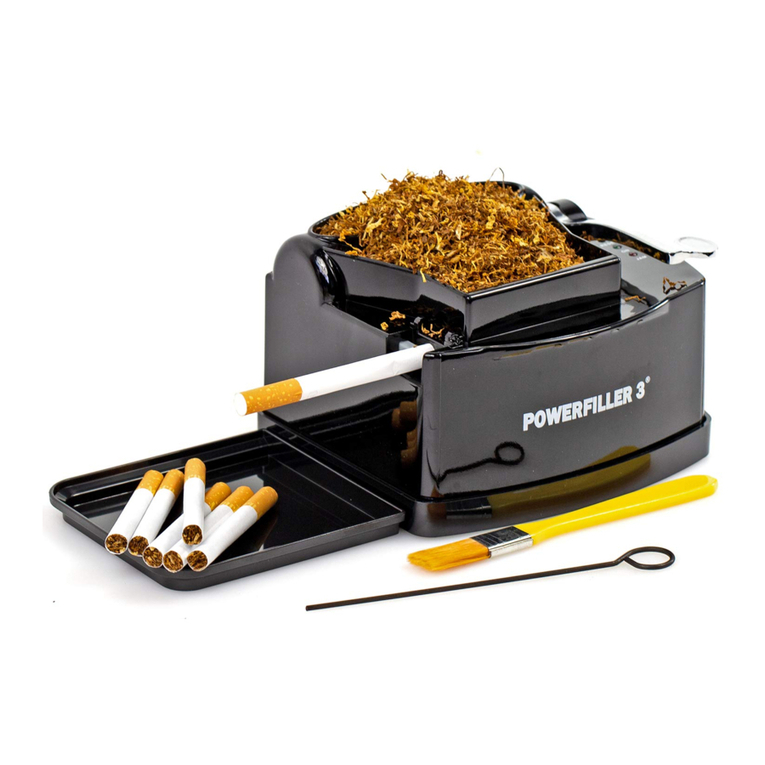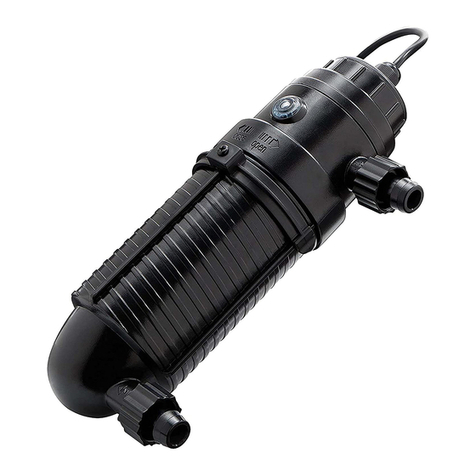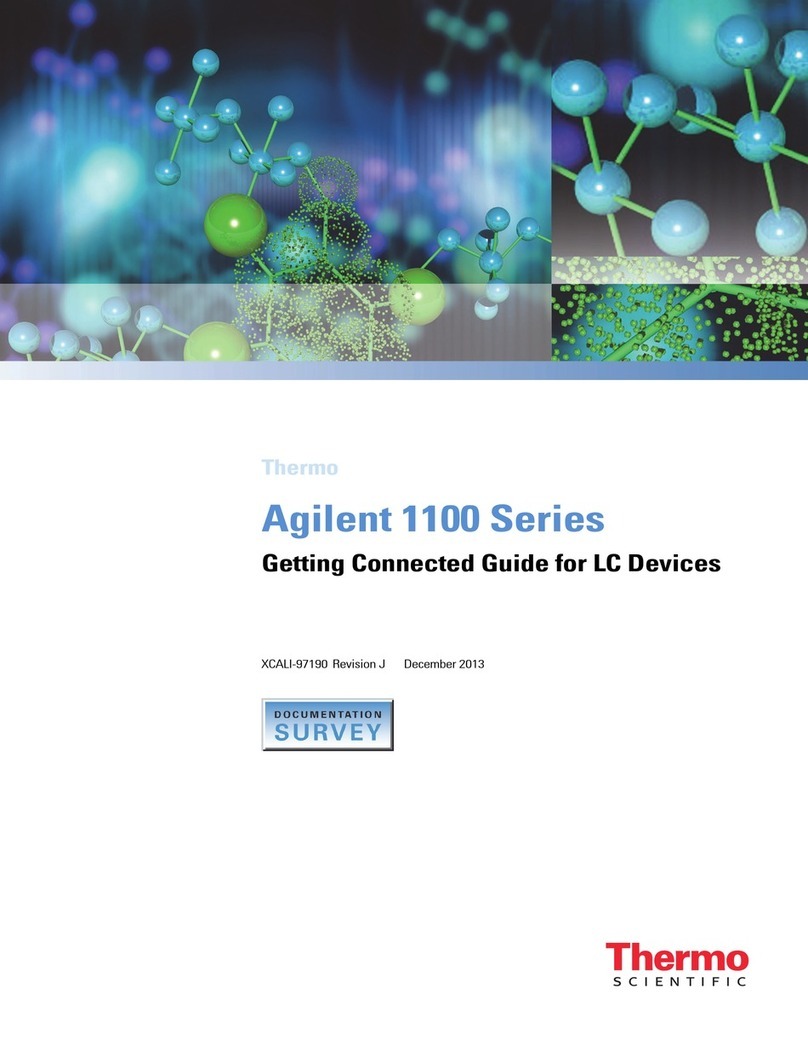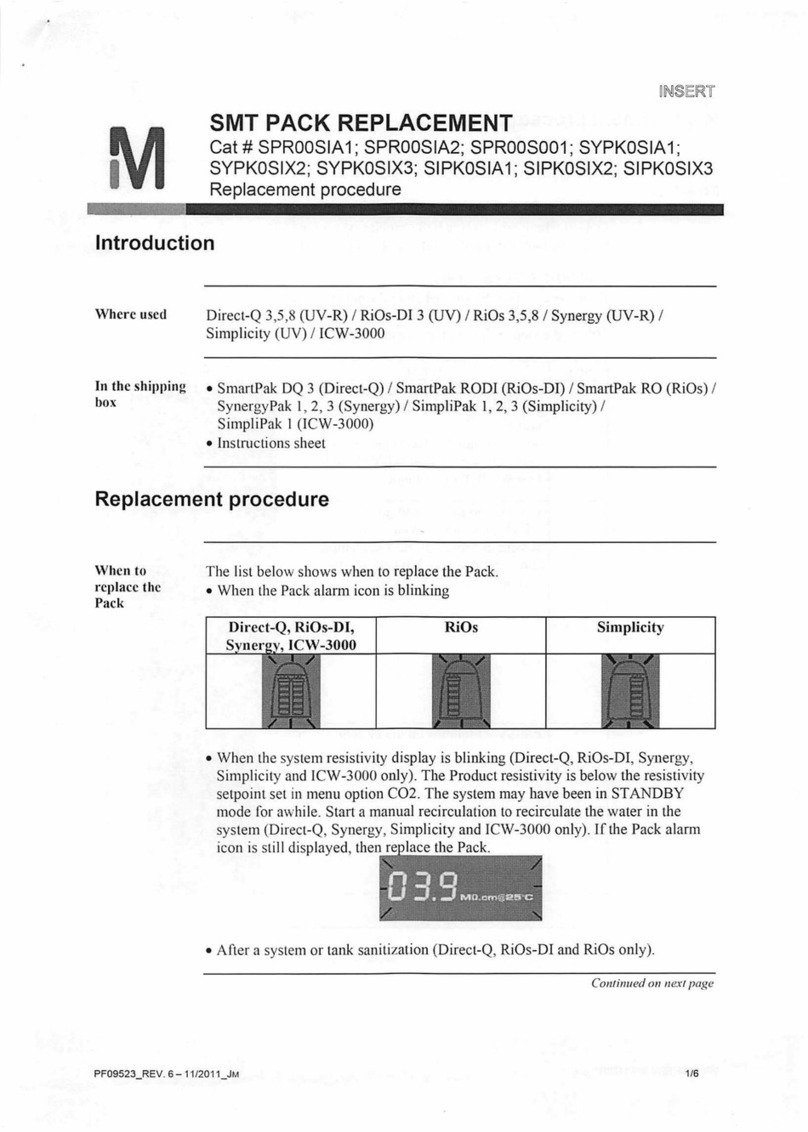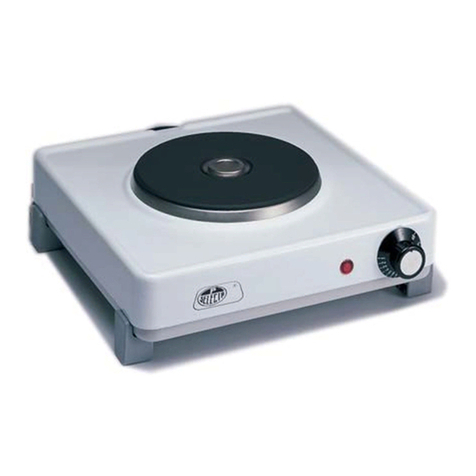DNA DTlite User manual

Operation Manual
DTlite
Real-Time PCR instrument
PART I
Operating Procedure
TS 9443-003-96301278-2010
“DNA-Technology, Research & Production” LLC
Protvino

2

3
Safety Information
IMPORTANT: READ THIS MANUAL CAREFULLY BEFORE USING THE INSTRUMENT
General Safety
Whenever see the sign Caution! Danger! refer to the manual.
Before using the “DTlite
” Real-Time PCR instrument (hereafter –the “instrument” or “device”), please read this sec-
tion carefully and pay particular attention to the safety information. To avoid accidents, as
well as breakdown of the instrument and equipment used therewith, observe the safety rules
given below.
If safety rules are violated during exploitation or in case of unintended use of the instrument,
the protection provided by the instrument may worsen and a health hazard may arise.
Do not operate the instrument if humidity exceeds 80% in the room. Condensate formation
may result of a short circuit in the instrument electronics.
The instrument should be saved from shocks and falling.
The instrument must be stored and transported only in a vertical position.
After transport or storage in humid and /or cold conditions, dry out the instrument not less
than 3 hours before connecting it to the supply voltage.
Avoid any liquids or objects getting inside the instrument's cabinet. This may result in break-
down of the instrument.
“DNA-Technology, Research & Production”, LLC bears no responsibility for any injuries or
damage to health caused by unintended use or unauthorized modifications of the instrument.
Electrical Safety
Prior to connecting the instrument to an electric grid, check the presence of protective ground-
ing in the socket to which the instrument will be connected as well as integrity of the power
cable. Connection to the socket without grounding is prohibited. Please use the power ca-
ble provided in the set of delivery. If liquid is spilt inside the instrument, disconnect it from
the power supply immediately and contact local service center or distributor.
Please connect the instrument to an electric grid with the corresponding voltage, which is
mentioned on the identification plate of it.
Caution! Danger of electrical shock! Replacement of fuses of the instrument has to
be carried out in compliance with the rules and guidelines of electrical safety regula-
tions. Fuses have to be replaced only when the instrument is switched off. The instrument is
considered to be unplugged if it is unplugged of the electricity socket and the USB cable is
disconnected from the USB 2.0 port of a PC.
During Operation
Do not expose the instrument to heat and sunlight or bright light from other intensive light
sources.
During operation
Do not expose the unit to heat and sunlight or bright light from other strong sources.

4
Maintenance
Do not open the cabinet of the instrument! It does not contain user serviceable compo-
nents.
Note! Settings of motor controllers, calibration parameters of optical and temperature mod-
ules of the instrument cannot be changed by the end user. Calibration of the instrument has to
be performed by the manufacturer in accordance with the internal regulations of quality con-
trol. Calibration data, if necessary, can be provided by the service department of DNA-
Technology Research& production
Operational Safety
The instrument is designed to be used under the following environmental conditions:
indoors;
altitude up to 2 000 m;
temperature from 5 °C up to 35 °C;
maximum relative humidity of 80% for the temperature up to 25 °C;
main voltage from 100 up to 220 V, frequency 50/60 Hz.
the instrument is protected in accordance with IP20 degree.
The istrument is IVD medical equipment and it is intended for studing of DNA samples using
the polymerase chain reaction (PCR) method and the detection of the accumulated product in
real time (real-time PCR). The instrument does not carry a direct biological hazard. Servicing
and maintainance of the instrument should be performed by specially trained, qualified staff.
While operation with the instrument:
wear suitable protective clothing, gloves and secure eyes and face;
do not pipette solutions by mouth;
do not eat, drink, smoke or use cosmetic products in the operational area;
after handling samples and chemical reagents wash your hands carefully;
dispose of leftover / used reagents and waste in compliance with the regulations in
force;
read the instruction for use provided with the PCR kit before running the assay;
while running the assay, follow the instructions for use;
do not use a PCR kit after its expiration date;
use only the chemical reagents provided along with the kit and those, which are rec-
ommended by the manufacturer;
do not mix chemical reagents from different PCR kits or lots.
Environmental Effect
Deinstallation of the instrument for maintenance or recycling purposes: if properly operated,
the device doesn’t bear biologically hazardous.
Recycling of the instrument should be carried out in accordance with the regulations in force
at the area. The device does not contain any substances, which may represent a direct threat to
the environment.
Notice
This instruction for use contains information protected by copyright. No part of it may be re-
produced without preliminary written consent of “DNA-Technology, Research & Produc-
tion”, LLC. Any software products, equipment and designations mentioned in the text may
represent trademarks of their holders.

5
Table of Contents
Introduction ................................................................................................................................6
1. General Information ...............................................................................................................7
1.1 Intended Use and modifications of the instrument...............................................................7
1.2 Delivery Set..........................................................................................................................8
1.3 Technical specification.........................................................................................................8
1.4 Operating Conditions..........................................................................................................10
1.5. PC Requirements...............................................................................................................10
2. Instrument description and principle of operation................................................................10
2.2 Fast thermal control system................................................................................................11
2.3 Optical system ....................................................................................................................12
2.4 Control and display system ................................................................................................12
2.5. Marking. Symbols used for marking.................................................................................13
3. Setting up the instrument......................................................................................................15
3.1 Instrument unpack ..............................................................................................................15
Instrument Carrying...........................................................................................................15
3.2 Instrument installation........................................................................................................15
3.3 Software installation...........................................................................................................16
3.3.1. Instrument Driver Installation..................................................................................16
3.3.2. Installation of RealTime_PCR software..................................................................22
4. Operating procedure .............................................................................................................25
4.1. Instrument Switching-on and RealTime_PCR Launch.....................................................25
4.2. Preparing the Instrument for PCR.....................................................................................27
4.2.1. Checkup of geometrical settings..............................................................................27
4.2.2. Optical measurement exposure setting ....................................................................27
4.2.3. Checking the Cleanness of Thermal Plate Wells.....................................................28
4.2.4. Tubes Height Measurement.....................................................................................28
4.3 Creation of plate protocol and amplification program .......................................................29
4.3.1. Filling in of plate protocol .......................................................................................29
4.3.2. Creation/editing of amplification program ..............................................................30
4.4. Placement of tubes with samples.......................................................................................31
4.5 Startup of the amplification program..................................................................................33
4.6 Amplification program running..........................................................................................34
5. Maintenance..........................................................................................................................35
5.1 General guidelines..............................................................................................................35
5.2 Maintenance procedure ......................................................................................................36
5.3 Disinfection requirements of the instrument prior to maintenance and repair procedures.36
5.4 Troubleshooting..................................................................................................................37
6. Storage and shipment ...........................................................................................................38
7. Recycling..............................................................................................................................38
8. EMS declaration...................................................................................................................38
9. Warranties.............................................................................................................................39
11. Acceptance certificate.........................................................................................................41
12. Cards of warranty repair.....................................................................................................43
13. List of claims and instrument disinfection procedure ........................................................45

6
Introduction
The “DTlite” Detecting Thermocycler (hereafter – the “instrument” or “device”) is intended
to conduct qualitative and quantitative PCR analysis dropping out electrophoresis stage of
PCR products in agarose gel when using PCR kits based on the fluorescent detection princi-
ple. Measurement of the quantity of accumulated product of PCR amplification takes place
right in the course of reaction temperature cycles (real-time PCR). The qualitative analysis is
based on evaluation of kinetics of PCR visible part, carried out using relevant mathematical
tool.
The use of fluorescent detection of PCR products has a list of substantial advantages:
high detection specificity (if oligonucleotide probes are applied, which allow detecting
only of certain amplicons);
high efficiency;
reduced assay time;
carrying out detection in a closed tube, which practically eliminates contamination of
further experiments;
availability of quantitative assessment of initial DNA-matrix;
registering and accounting of the data in electronic format.
Fig.1 Instrument general view

7
1. General Information
1.1 Intended Use and modifications of the instrument
The “DTlite” real time PCR instrument is intended for carrying out an assay using polymerase
chain reaction (PCR) method and accumulated product detection in a real time (real-time
PCR). Detection of the accumulated PCR amplification product occurs directly during the ex-
ecution of the amplification program, which increases the informative value of the study.
The field of application - clinical laboratory diagnostics in vitro;
Purpose of use –diagnostics;
Sample type - samples of human DNA and microorganisms extracted from samples of bio-
material;
The instrument is manufacturing in the following modifications: 4S1, 4S2, 5S1, 5S2, 6S1,
6S2, 4L1, 5L1, 6L1.
Modification of the instrument is defined by the following structure –XXX, where:
1) 1st X is figure from 4 to 5 and it indicates the number of optical detection channels;
2) 2nd X is the symbol S or L, which determines the thermal block format: S - 48 wells of
200 l, L - 384 wells of 45 l.
3) 3rd X is figure 1, or 2 means a thermal block version such as 1 –monoblock; 2 - the num-
ber of thermal block sections.
The instrument is designed for simultaneous analysis of up to 48 or up to 192 samples de-
pending on the modification (S or L).
Preparation and initialization of experiments on the instrument is realized with an IBM- com-
patible personal computer, and further implementation of a preset program may be executed
autonomously. On completing the amplification program, the instrument goes to the storage
mode, and if the option “Turn off device after the run” is activated on the window “Run-
ning”, the instrument goes to the power standby mode.
The optical measurements results may preliminarily be evaluated during the execution of the
amplification program, whereas the final evaluation –at any time after completing the pro-
gram. All data of the last amplification are saved in the internal memory of the instrument and
may be read out even in the case of power failure during amplification. As soon as the mains
supply is restored, the instrument continues to function with full recovery of the amplification
program status. Neither failure of the operating system, nor disconnection of the external
computer will halt the experiment. Thus, the instrument is highly protected against major fac-
tors effect, which may result in a failure during PCR implementation.
One computer may control operation of several instruments, including ones of different types
(DTlite, DTprime) connected to it via USB ports.
To operate the instrument, the RealTime_PCR software is used, which allows performing the
following operations:
Test creation and editing;
Plate protocol creation;
Checking geometrical and optical settings of the device;
Creation, launching, and monitoring of the amplification program;
Monitoring the execution of the amplification program
Analysis of optical measurements data.
Data analysis report.
Settings and diagnostics of the instrument.
Loading and unloading of analyzed samples may be automatic in case if the instrument is
built in a robotic system.

8
Instrument is open system and it is not depended of concrete PCR kits.
1.2 Delivery Set
No.
Description
Reference
Producer
Quantity
pcs.
1
DTlite real time PCR instrument
RT48-01SP
DNA-
Technology
R&P
1
2
Instruction for use (Part I and
Part II)
RT48-04IFU
DNA-
Technology
R&P
1
3
Computer communication cable
USB 2.0 High Speed А-В
—
China
1
4
Power cable
Taiwan
1
5
Fuses. Type (10A,250V)
179200.10
Germany
1
6
Distribution package of software
RealTime_PCR version
1.0.0.198
and higher
DNA-
Technology
R&P
1
7
Packing unit
RT48-03PG
DNA-
Technology
R&P
1
The instrument may be delivered along with portable PC with the pre installed software in
accordance with customer’s request. Note: PC should be purchased along with the order of
the instrument.
1.3 Technical specification
Specification
Value
Thermal block format (modification S)
48 tubes of 0.2 ml (8 x 6)
Thermal block format (modification L)
192-well microplate
Tube type (modification S)
0.2-ml tubes for PCR (individual or in strips, 8 pieces
each)
Tube type (modification L)
192-well microplate, 16x12 wells of 45 mcl volume
Reaction volume (modification S)
10-50 mcl
Reaction volume (modification L)
5-30 mcl
Temperature range
0 C-100°C
Temperature step
0.1°С

9
Temperature accuracy
±0.2°С
Temperature uniformity
±0.3°С
Average heating ramp rate within temperature
range of 0…100°С (modification S)
Maximum heating ramp rate within tempera-
ture range of 0…100°С (modification S)
3.3°C/s
3.5°C/s
Average cooling rate within temperature
range of 100...55°С (modification S)
Maximum cooling rate within temperature
range of 100...55°С (modification S)
2.1°C/s
2.5°C/s
Average heating ramp rate within temperature
range of 0…100°С (modification L)
Maximum heating ramp rate within tempera-
ture range of 0…100°С (modification L)
3.0°C/s
4.0°C/s
Average cooling rate within temperature
range of 100...55°С (modification L)
Maximum cooling rate within temperature
range of 100...55°С (modification L)
2.0 °С /s
3.0 °С /s
“Hot lid” temperature
105°С ±1°С
Heating and cooling method
Peltier elements
Excitation source
LED
Detector
CCD camera
Number of optical channels
4 or 5
Excitation/Detection wavelengths for each
channel, nm
470/515, 530/560, 580/620, 630/660, 687/731 (*)
Threshold sensitivity of each channel for
standard fluorophors solutions
0,05хЕ-12 gram-mol
Data connection
USB 2.0 High-speed
Power consumption
550 W (max.)
Mains voltage
220 V
Line frequency
50/60 Hz
Dimensions, WxDxH
210х480х310 mm

10
Starting operation after switching on
no more than 5 minutes
Weight
17 kg
* spectral characteristics of optical channels can be changed within the specified limits 450 ÷
750 nm in accordance to customer request.
1.4 Operating Conditions
The instrument is intended for the use indoors under the following climatic conditions:
indoor temperature should be from 5°С to 35°С;
relative humidity for temperatures up to 25 °С should not exceed 80%;
at an altitude of not more than 2000 meters.
1.5. PC Requirements
The instrument operates under the control of IBM-compatible personal computer with the fol-
lowing minimum requirements:
1 GHz Pentium IV;
512 Mb RAM;
Free hard drive space 100 Mb;
Screen resolution 1024x768 pixels;
USB 2.0 High-Speed port.
To control the instrument the following parts of software pack must be installed:
the instrument driver;
Realtime PCR software to control the instrument and perform data analysis.
The software may be downloaded for free from the company’s official website at
http://www.dna-technology.ru/eng/support/
The software is compatible with the following operating systems: Windows 98, Windows
ME, Windows 2k/XP, Windows Vista, Windows 7, Windows 8, Windows 10.
2. Instrument description and principle of operation
DTlite is a specialized instrument combining a precise programmable thermal cycler and an
optical system to collect fluorescent data at each stage of polymerase chain reaction.
2.1 Design of the instrument.
The design of the instrument is a supporting frame which bears the following installed mod-
ules:
thermo block including positioning module of actuated parts of the instrument de-
signed for automatic moving of it;
the optical system module which consists of sources of excitation based on LEDs and
detection based on CCD camera;
optical path module for transporting light beams;

11
hot lid module, which presses the tubes from the top and heat them for preventing
condensation and also eliminates self-opening of the tubes in order to avoid a possible
contamination of the instrument by amplicones;
electronics modules including power supplies RS-50 and SP-500-12;
cabinet of the instrument, which has several ventilation holes.
The instrument rear panel accommodates the following (fig.2):
power switch;
two fuses;
power input;
USB connection (type B).
Fig.2 Rear view of DTlite instrument
Caution! The instrument has precision mechanical elements. To avoid displacement of them
any shocks during operation and movement of the instrument should be eliminated. When in-
strument is moved the thermal block has to be in closed position.
2.2 Fast thermal control system
The system of high-rate temperature control includes a thermal unit, its movement and posi-
tioning module, and the hot lid module.
The thermal block ensures thermal cycling of the tubes according to the amplification pro-
gram. Two Peltier elements are used for thermal plate cooling and heating providing high ac-
curacy of temperature regulation, noiselessness, good characteristics of mass-and- dimension
ratio and high reliability. Each of these Peltier elements has its own temperature sensor and
regulator that allows the preset of necessary temperature gradients across the plate.
The instrument thermal plate is made of aluminum alloy, which possesses an optimal ratio
between good thermal conductivity, weight, and processing characteristics. The plate design
is a cellular structure with reinforcing ribs and corresponding number of wells:
in S modification –48 wells for standard 200 mcl PCR tubes with distance between the
rows as in standard 48-well plates. The well shape provides optimal heat transfer to the sam-
ples with volume up to 50 mcl.
in L modification –192 wells for standard 45 mcl 192-well PCR microplates.
Note! For stable results, tubes with the angle of tapered part of 17°20" must be used.

12
Movement and positioning module is intended for precise positioning of the thermal unit
within 140 mm in horizontal plane, which provides easy access to the tubes.
The hot lid module provides a reliable heat contact between tubes and the thermal plate and
allows maintaining temperature of the tube caps at the level of 105±1°С in order to prevent
condensate formation on the tube caps, since it may cause substantial distortions in the lumi-
nous flux measurements. The hot lid design provides an adjustable force of tube-to-plate hold-
down that depends on the number of the tubes installed. During running PCR the thermal
block moves vertically from bottom to top. The moment of contact of the tubes with the hot
lid is monitored by a special sensor, which passes information to electronic module of the in-
strument to calculate the necessary pressing force. The positioning module moves the thermal
block vertically by an amount that provides the necessary pressure to hold the tubes against
the surface of the hot lid.
2.3 Optical system
The optical system consists of an optical module and a light beam transmission module.
The optical module is a system of lenses, mirrors and light filters that provides folding of the
luminous flux from several light sources on one optical axis and its separation from the lumi-
nous flux entering the CCD camera. The light sources are powerful LEDs. The light source
design provides efficient heat removing from emitting crystals of the light-emitting diodes for
stable luminous flux.
Optical path (light beams transmission module) ensures the transmission of the luminous
flux from light sources of the optical module to the tubes, and back transmission of the fluo-
rescent luminous flux from the tubes to CCD camera.
The module for light beams transmission is a rectangular duct. Rectangular mirrors located in
the duct corners provide the optical pathway in a required direction.
The system of light locks provides an absolute isolation of the optical channel from external
light.
The calibration curve of the optical channel (the dependence of the measured fluorescence
intensity on fluorophor concentration) is linear in the range of the quantity of matter of stand-
ard fluorophor from 0.05х10Е-12Мup to 0.2х10Е-12М.
2.4 Control and display system
The control and display system comprises a push-button panel for manual control of the ther-
mal block movement and the LCD screen indicating the process of amplification program
running (Fig.3).

13
Fig.3 LCD screen and control buttons.
Push-button of on-screen menu (left) displays the information on the functions of other
panel push-buttons within the given mode of operation.
The push-button of thermal block control (in the centre) is intended for launching the fol-
lowing operations:
opening and closing of the thermal block for placing the tubes into the thermal plate
before PCR running;
precise positioning of the thermal block under optical elements in their operating posi-
tion.
When the instrument operates under computer control, one can open or close the thermal
block using and buttons located under the button
in the Running window of RealTime_PCR soft-
ware.
LCD screen displays information about an amplification program and the running process.
It shows the following information:
name of the amplification program;
instrument status on completion of an amplification program;
current temperature of the reaction mix;
indicator of the amplification program run status.
2.5. Marking. Symbols used for marking.
Labeling of the instrument meets the requirements of the following standards: EN ISO 18113-
1:2011, EN ISO 18113-3:2011, EN 61010-1:2010, EN 61010-2-101:2018.
Below provided example of the label on the rear panel of the instrument:

14
Real-time PCR
Detecting termocycler DTlite 4S1
IVD Medical Equipment
TS9443-003-96301278-2010
2020 A5I357
The following warning signs “Fragile”, “Top”, “Keep dry”, “Stacking is forbidden” are
placed on the shipping box as well as:
trade mark or information about manufacturer;
brand name;
date of production;
net weight;
gross weight;
requirements for transportation and storage.
Symbols used for marking:
For in vitro diagnosis only
Storage requirements (temterature)
« Fragile »
«Top»
« Keep dry »
« Stacking is forbidden »
Date of production
Manufacturer details
High voltage

15
3. Setting up the instrument
3.1 Instrument unpack
DTlite real time PCR instrument is delivered packaged in a cardboard or wooden box with
inserts of polyethylene foam; the package is intended to protect the instrument from mechani-
cal damage when shipped or stored.
Before being packaged in the box, the instrument is placed to a special bag of durable and wa-
terproof material with zip fastener and transportation straps.
Caution! Heavy! The instrument has to be carried to the installation’s place in the
manufacturer’s package box by two persons.
Before taking the instrument out of the package box, perform the following procedures:
provide a vacant space on a work table for the instrument;
place the box with the instrument beside the table and open it;
take the components out of the box, and remove the polyethylene foam inserts;
compare the components with the delivery set (refer to item 1.2);
observing all the precautions, lift the instrument by two persons using transportation
straps and place it on a table;
remove the bag and inspect the instrument visually for external damages.
If any items are missing or damaged, contact your local “DNA-Technology” distributor or
“DNA-Technology” directly.
Instrument Carrying.
During operation, the instrument may be carried over a short distance within the facility in
unpacked condition by two persons or using movable table (trolley) to other preliminary pre-
pared working place in accordance with corresponding precautions.
Note! In case the instrument is transported over long distances or shipped by a carrier, it has
to be placed into the original manufacturer’s package.
Caution! When instrument is moved the thermal block has to be in closed position. Other-
wise, in case of some problem with instrument please contact service department of local dis-
tributor or “DNA-Technology” directly.
3.2 Instrument installation
Caution! When selecting the place for the instrument installation, please ensure the space,
which should be not less than 14 cm, from the front panel of the instrument to the table edge.
This area should be free from other objects. Otherwise the thermal block face panel may be
damaged by foreign objects located or appearing in the way of its movement.
Also when selecting a place for the instrument’s installation, leave about 12 cm of space in
the front and in the all others sides of the instrument for sufficient ventilation and free access
to the thermal block and power switch.
Plug the power cord into the back of the instrument and into an appropriate electrical outlet.
Plug the USB 2.0 cable into the back of the instrument and into an appropriate PC USB port.
Press the power switch on the back panel of the thermal cycler to start the system.
For a complete power off the instrument must be disconnected from the power outlet and PC.

16
The instrument does not require any additional devices to stabilize circuit voltage. When
plugging up the instrument to the devices of uninterruptable power supply, please note that
provided power must be not lower than 550W.
Prior to connecting the instrument to the supply voltage, check the presence of protective
grounding in the socket to which the instrument will be hooked up as well as integrity of the
connecting cable.
Caution! Hooking up to the socket without grounding is prohibited.
It is important that the instrument be correctly grounded. The instrument is supplied with
power cord that provides the instrument grounding, when connected to an appropriate power
outlet.
Also it is important that the instrument and PC must be connected to the same grounded pow-
er outlet. Otherwise, there is a risk of the instrument damage.
Caution! After transport or storage under humid and cold conditions, dry out the instrument
(2-3 hrs) at indoor temperature (+18-25°С) before connecting it to the supply voltage. During
drying out the intrinsic protection may be impaired.
3.3 Software installation
To control the instrument, software from the instrument’s delivery set should be installed on
PC. The software operates in Windows 98, Windows ME, Windows 2k/XP, Windows Vista,
Windows 7, Windows 8, Windows 10.
Software installation is required only if the instrument and PC are purchased separately. If the
computer is supplied as a part of the instrument set, the software has been already installed.
Caution! In case of purchasing the instrument without PC, any Windows operating system is
not provided.
Software installation procedure consists of two stages:
1. Instrument driver installation.
2. Installation of the software.
3.3.1. Instrument Driver Installation
Driver installation for the instrument is identical with one for any standard device and should
be performed as follows:
Switch on PC and wait until the operating system is launched.
Insert the USB flash drive with the drivers into the USB port of PC or download drivers
from DNA-technology official website at http://www.dna-technology.ru/eng/support/
Turn on the instrument using the power switch on the back panel.
The operating system identifies a new device in 1-2 minutes (wait for message
on the computer screen) and start driver installation process using
the Found New Hardware Wizard (Fig.4)

17
Caution! When installing the driver on the PC with Windows 7, Windows 8 or Win-
dows 10 operating system, the Found New Hardware Wizard window does not
appear automatically. Do the following to install the driver:
After connecting the instrument to the computer, open Device Manager window, then
right-click DT-964 and select Update driver in the list
In the next window Driver Updating select Manual driver search and installation,
click Browse, select Drivers_DT96x_W32_2014 folder (for 32-bit version) or Driv-
ers_DT96x_W64_2014 folder (for 64-bit version).
Click Next and complete the driver installation as described below.
Fig.4 Launching the Wizard for driver installation
Select point No, not this time and click

18
Fig.5 Selecting a type of installation
Select Install from a list of specific location and click (Fig.5)
Fig.6 Searching Drivers_DT96x folder on the USB flash drive
Select a path to the driver folder by ticking Add this location to the search and click
(Fig.6).

19
Fig.7 Selecting the Drivers_DT96x folder on the USB flash drive
In the pop-up window Browse For Folder select Drivers_DT96x folder on the USB
flash drive and click (Fig.7).
Making sure the driver folder path is correct (Fig.6), click
Fig.8 Selecting inf-file on the USB flash drive
Select the latest version of the driver and ignoring message The driver has no digital signa-
ture confirm the driver selection by clicking (Fig.8).

20
Fig.9 Further Driver_DT96x installation
confirm the driver selection by clicking (Fig.9).
Select the path to Dt964.sys file on the USB flash drive by clicking
(Fig.10).
Fig.10 Selecting the path to Dt964R.sys file on the USB flash drive
In the next window Locate file find this file in the Drivers DT96x folder on the USB
flash drive, select it and click (Fig.11)
This manual suits for next models
1
Table of contents
Popular Laboratory Equipment manuals by other brands
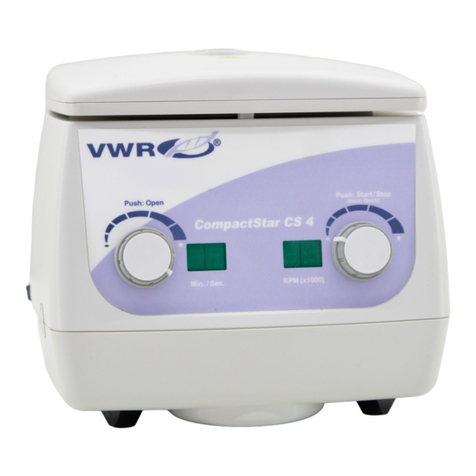
VWR International
VWR International Compact Star CS4 instruction manual

CORNING
CORNING PC-170 instruction manual
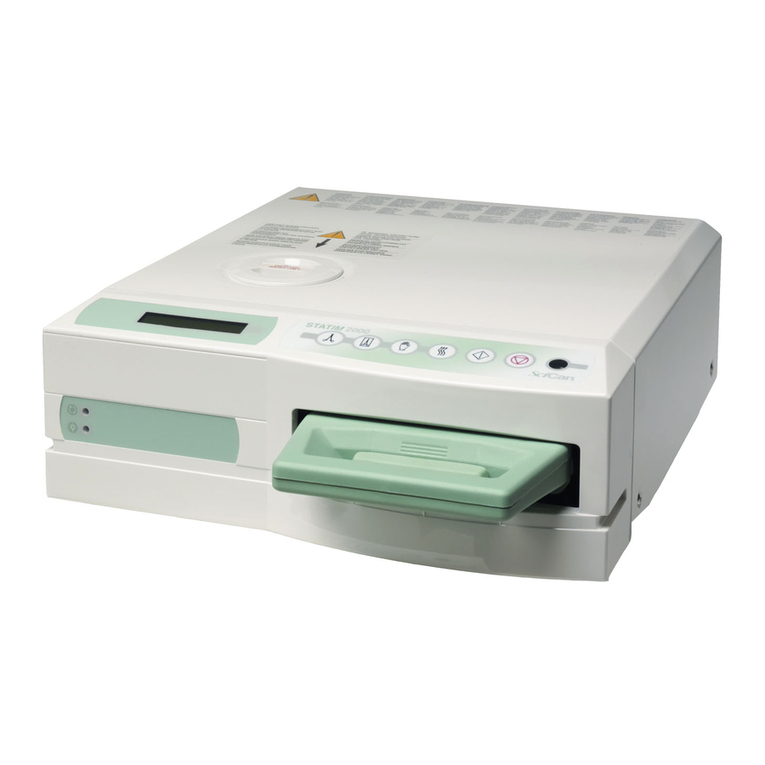
SciCan
SciCan Statim 2000 Operator's manual

Thermo Scientific
Thermo Scientific VF-F20-A operating manual
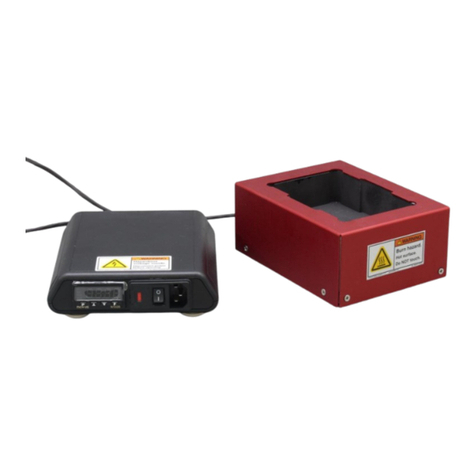
V&P Scientific
V&P Scientific VP 741GA Series Operation manual

KAFULLE
KAFULLE KF-9301 instruction manual


